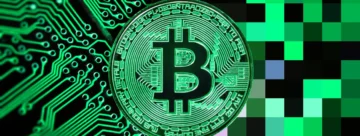Why Digital Dollar Launch Is Inevitable, But U.S. Has No Consensus on It?

A central bank digital currency (CBDC) is one of the trigger topics around which the information campaign is unfolding in the pre-election presidential race in the United States. At that, the positions of political forces in the U.S. are divided — Republicans oppose the issuance of the digital dollar, at least until the elections, and Democrats are trying to push through it while they still retain control over the White House. But why has this topic become so significant in 2024? Let’s try to consider this question in general terms.
It’s important to note that a brief analysis will inevitably involve generalizations, as the real situation is much more complex and multifaceted.

Why Do Democrats and Republicans Take Opposite Stances on Digital Dollar Issuance?
To answer this question, it’s necessary to look at the economic forces behind the two key political parties in the United States. Republicans are predominantly supported by representatives of the real economy, meaning large industrial corporations. They extract, build, manufacture, and trade while relying on real-world assets. On the other hand, Democrats are primarily backed by representatives of financial capital, i.e. the Wall Street, which produces nothing but receives huge dividends from investments and various market speculations, relying mainly on financial assets such as currency and securities.
Certainly, there’s close interaction between these two economic clusters, but their production base lies in different planes. That’s precisely why the Democratic Party, as the advocate of financial capital interests, seeks to introduce the digital dollar as soon as possible, while the Republican Party is actively obstructing it, at least at this stage. It’s worth noting that the bill recently proposed by Republicans doesn’t prohibit the issuance of CBDCs per se, but only the unilateral issuance of the digital currency by the Fed without congressional oversight. The pressure forces the Fed to defend its position, justifying the need to issue the digital dollar “yesterday.” But both parties are being disingenuous, of course.

Arguments Both Parties Use in Public Debate
Republicans have potentially taken a more advantageous position. They directly point out the prospects of total financial control of citizens by the central government, which can be implemented through CBDCs. This is what Donald Trump, a candidate for the U.S. presidency, often refers to in his speeches. To citizens, the issuance of the digital dollar is presented as an encroachment on their financial freedom and a violation of their constitutional rights. The advantage of this position lies in the fact that it largely reflects reality, just not entirely, but we’ll get to that later.
Democrats appeal to the necessity of participating in the global “CBDC race,” especially against the backdrop of China’s progress in this area. An additional argument is the fact that active efforts to implement digital currencies have been pursued by approximately 90% of all central banks for at least two years. According to the publicly voiced opinion of the Federal Reserve, delaying this issue poses risks of potential weakening of the U.S. dollar’s role as a means of cross-border payments. And this is also a justified position that reflects reality but conceals much more significant risks to the American economy.

When Will Digital Dollar Be Released?
The question is not whether it will be released, but rather when exactly the digital dollar will be issued. Because what’s happening is nothing more than a backstage struggle for the right to control the digital dollar. What are Republicans keeping quiet about? They’re just as interested in the CBDC issue as Democrats are, and the problems of ordinary citizens are merely pre-election populism. Moreover, all finances in the U.S. have long been “under wraps” anyway. The question is different — representatives of industrial capital aren’t interested in such a significant financial instrument being created without considering their interests. Therefore, among their demands is the necessity for Congress, where the majority is precisely with Republicans, to approve the issuance of any form of central bank digital currencies.
On the other hand, Democrats are in a hurry precisely because control over the digital dollar is an obvious trump card needed by representatives of financial capital to advance their interests in opposition to the interests of large industrialists. Yet the Fed tactfully glosses over more significant risks for the U.S. economy associated with the loss of the dollar’s status as the primary financial instrument for cross-border transactions. If central banks no longer need to hold large sums in U.S. dollars in correspondent accounts, the excess currency will inevitably start flowing back into the American economy, which will provoke inflation and put pressure on the dollar’s exchange rate. And despite the Fed’s assurances, this situation will create risks of a completely different level, as the U.S. currency will gradually lose its position as a store of value, on which the U.S. hegemony is based.
Therefore, the issuance of the digital dollar is of interest to both American parties and the forces behind them. The only question is who will benefit more from it. That’s why the CBDC release in the United States is a matter of time. Moreover, according to analysts at Ripple Labs, central bank digital currencies represent the evolution of money and will change the world over the next decade, and the CBDC market could reach $5 trillion by 2033.











